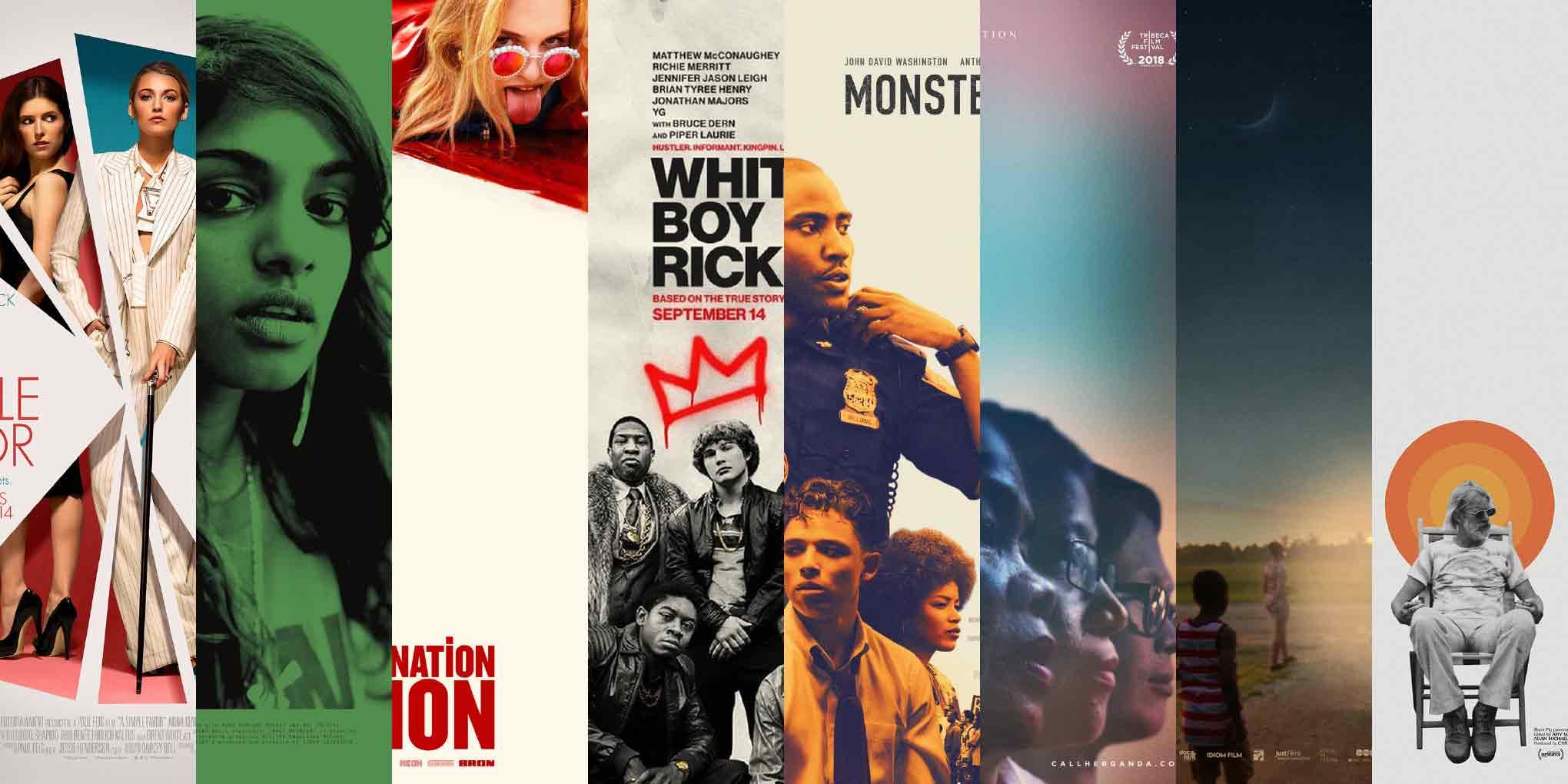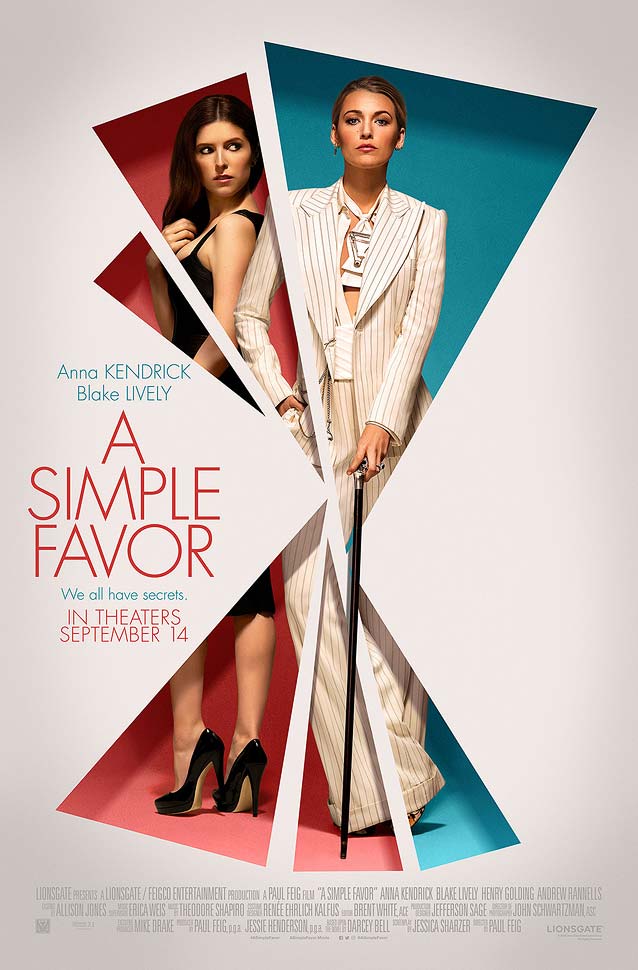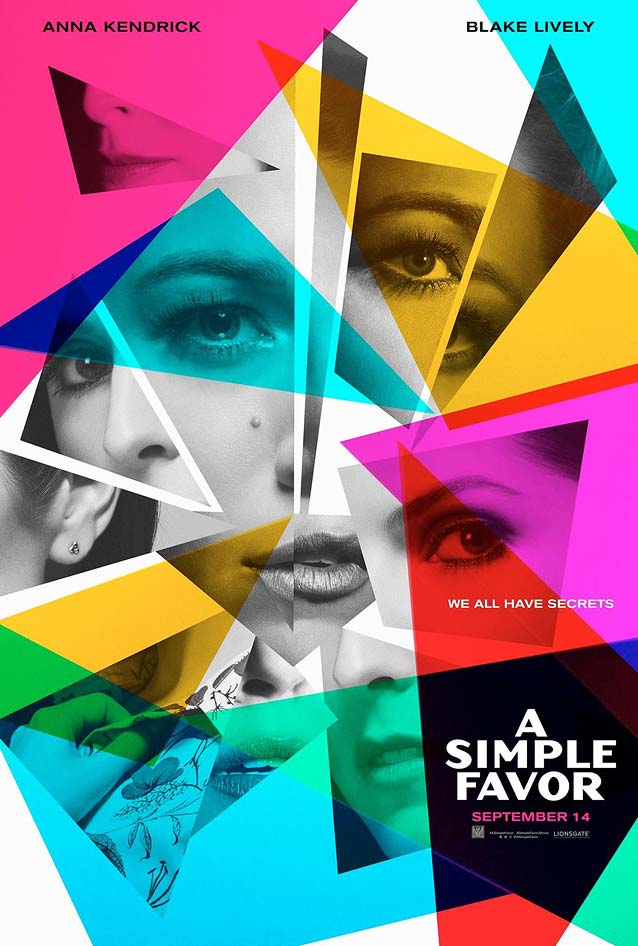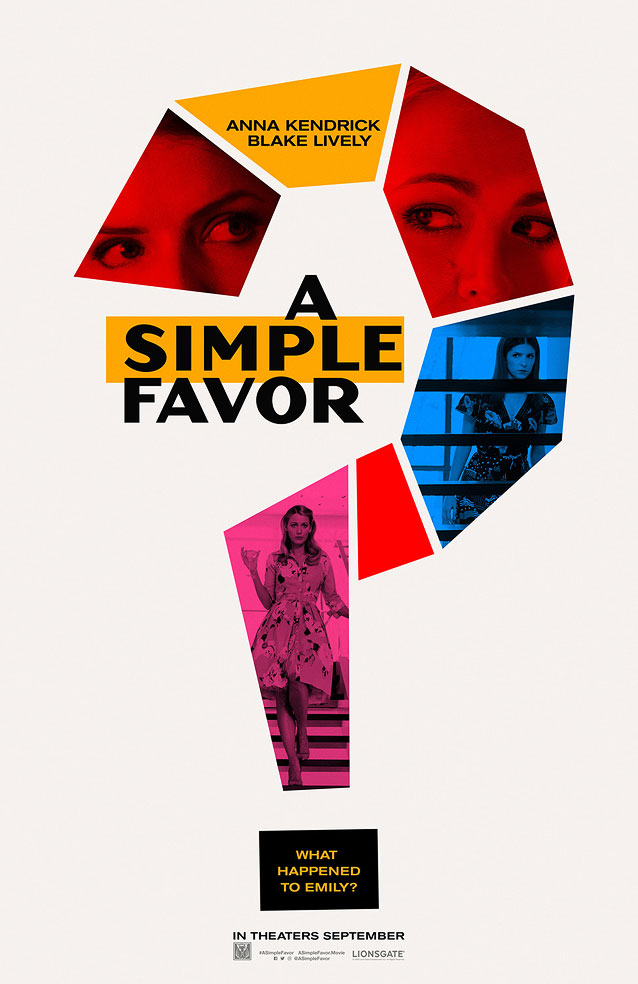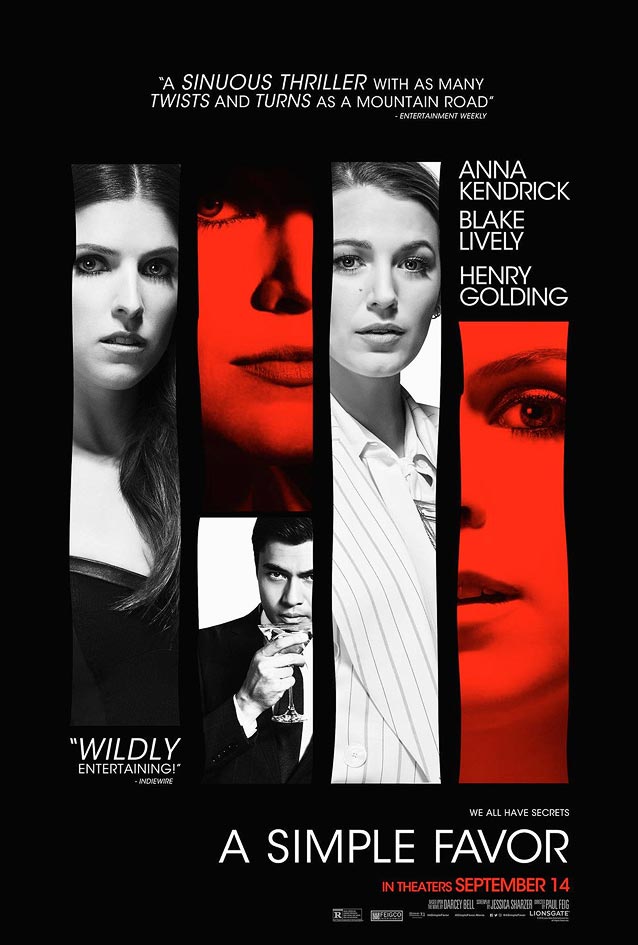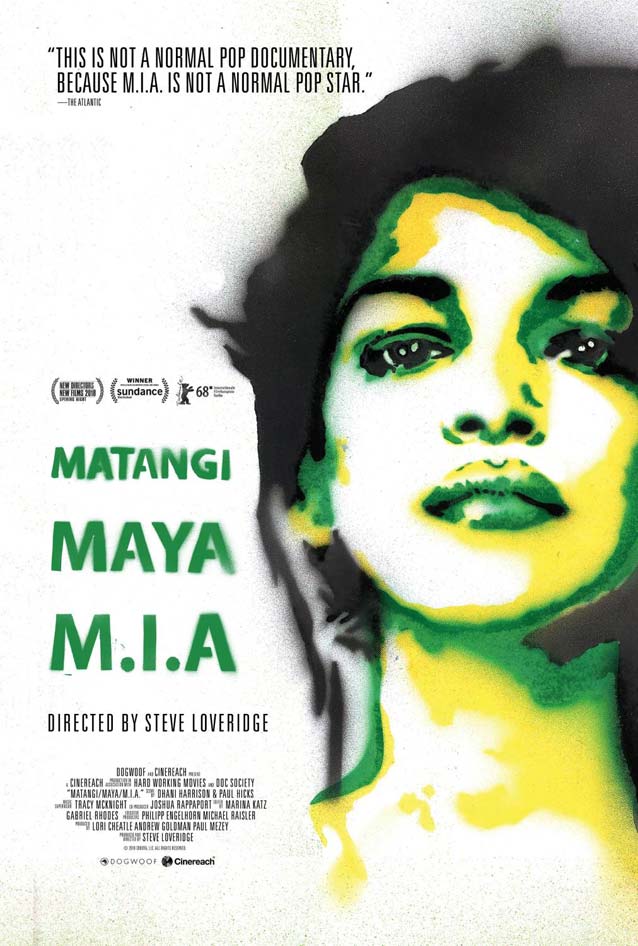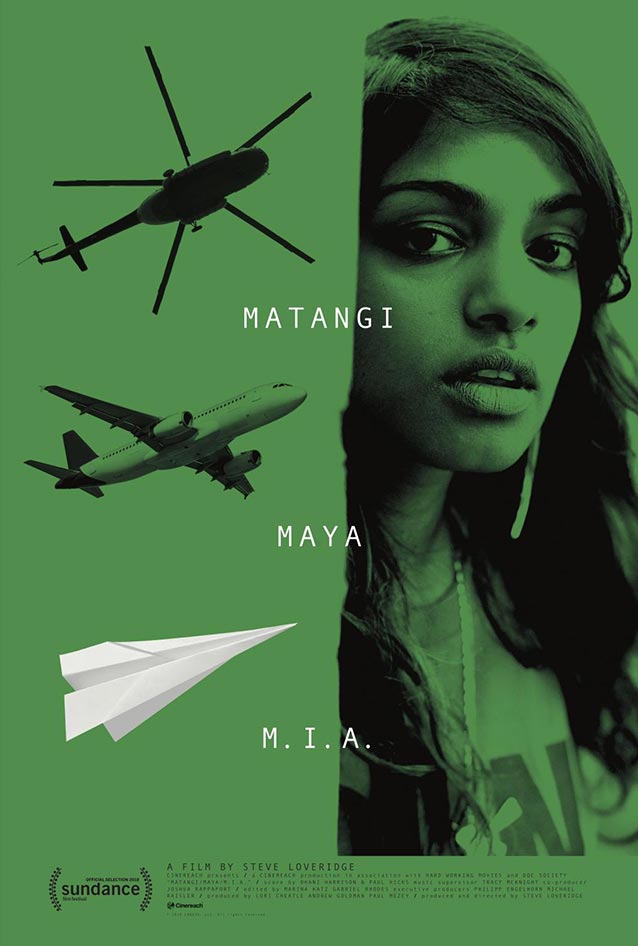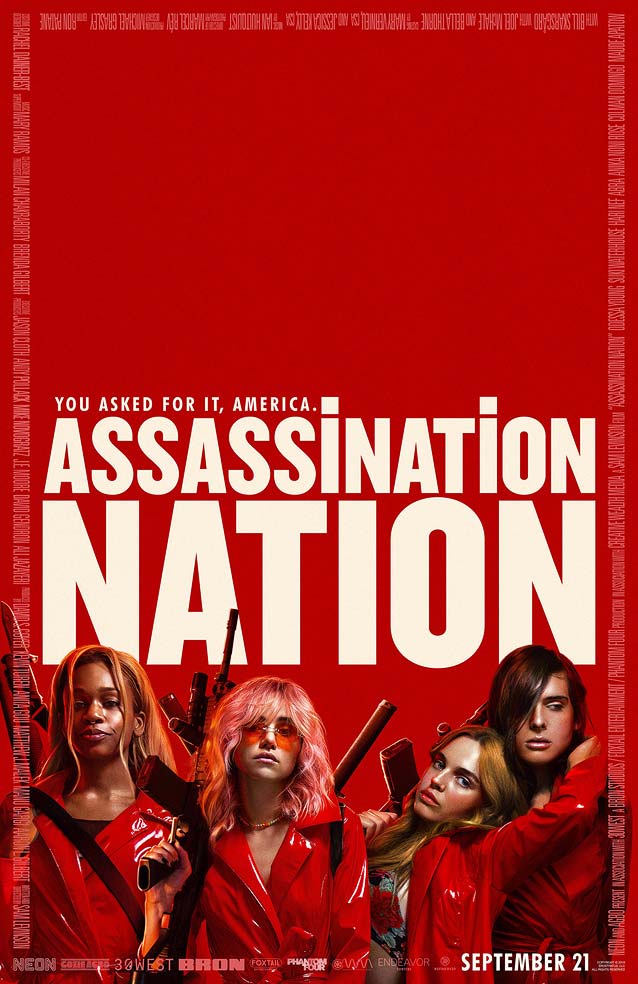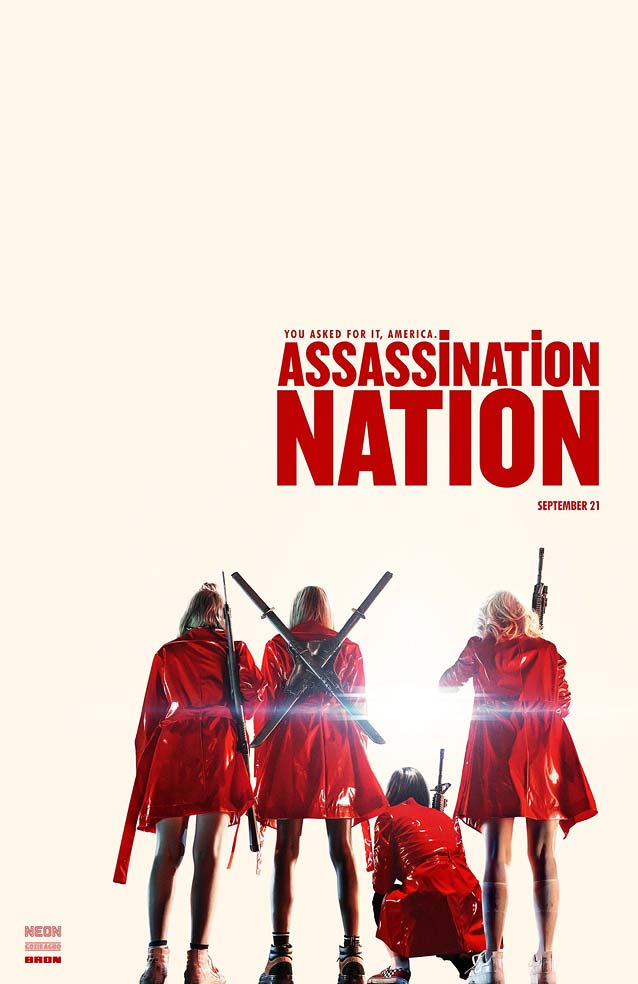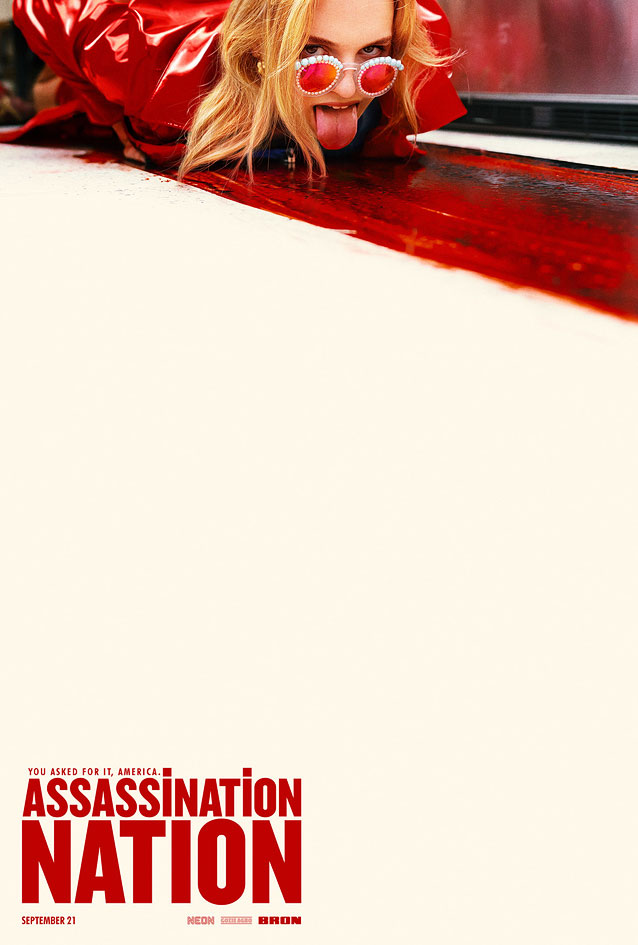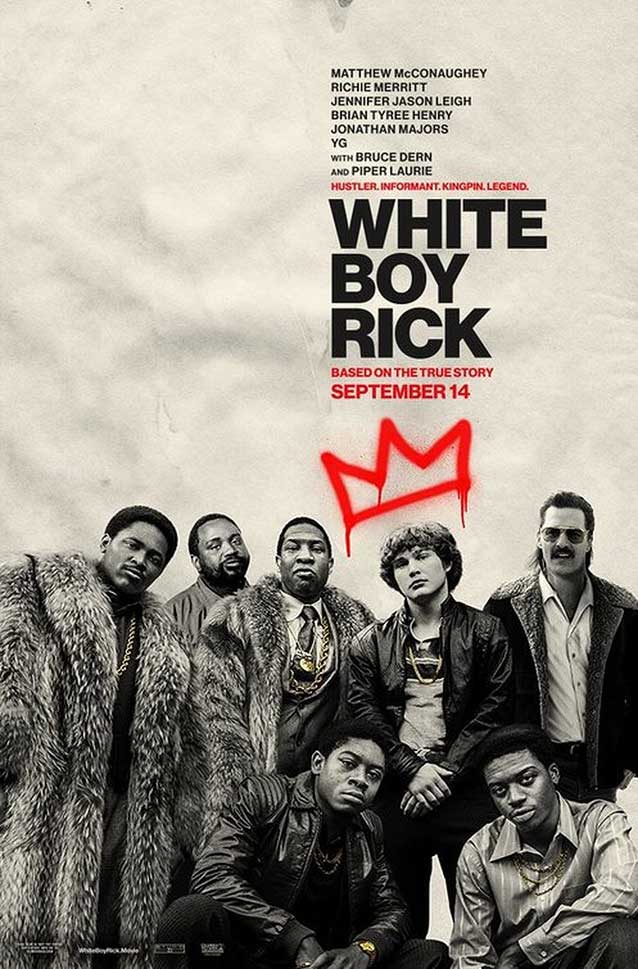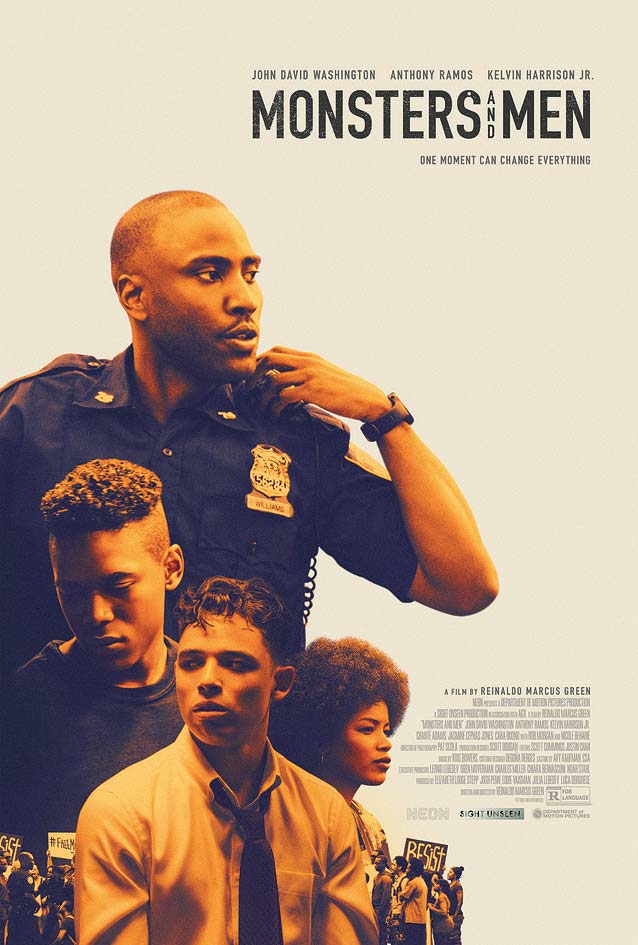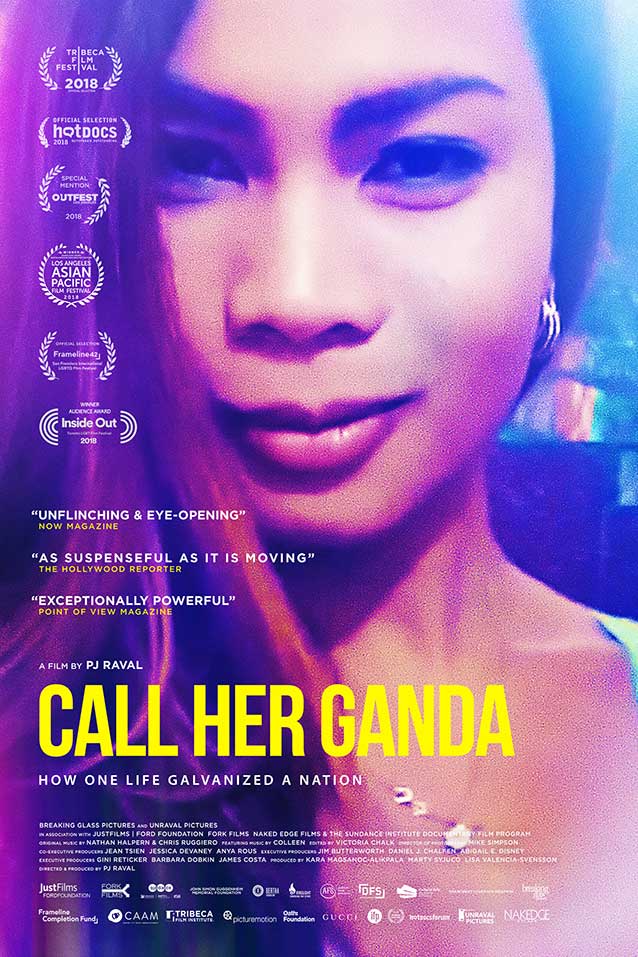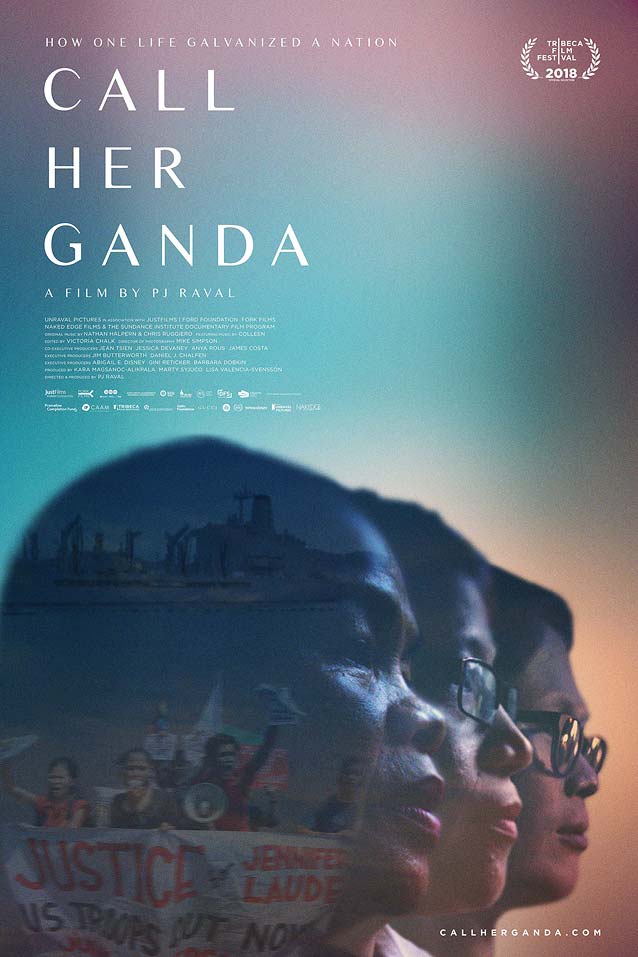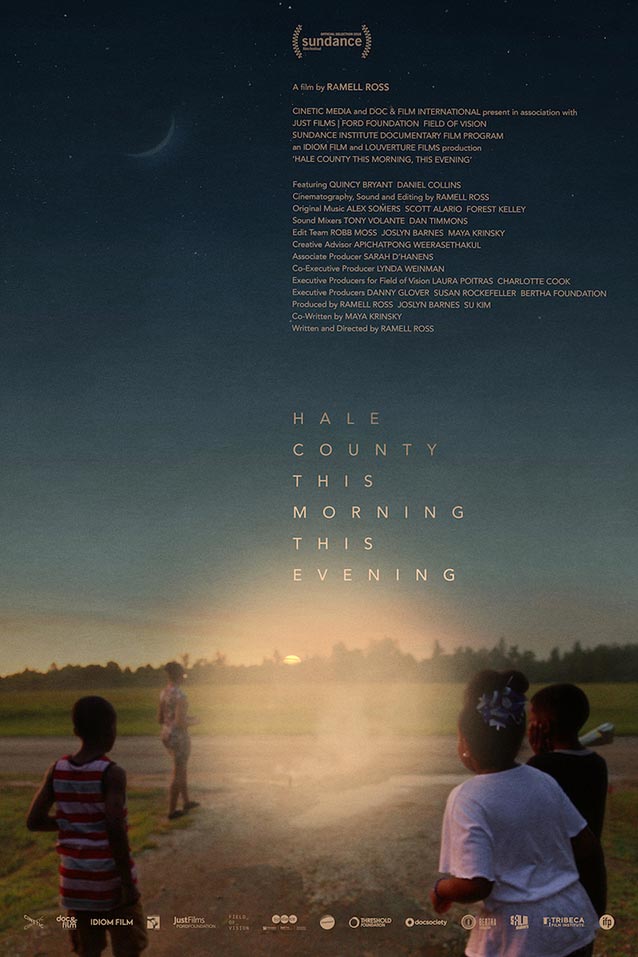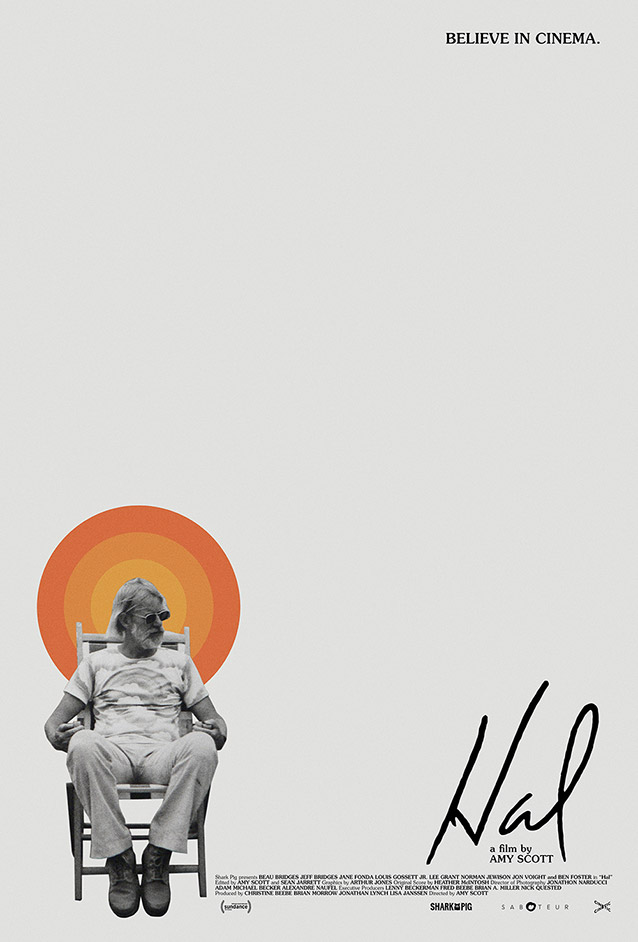A Simple Favor
© 2018 Lionsgate. Key art by LA.
LA came up with a smart concept for A Simple Favor A , M , and V resonate with the pointy triangles. Paul Renner’s classic is so grossly overused that I feel compelled to suggest some alternatives. Like the recently added Oskar One , BF Bonn , Telefon , Mostra Nuova , and Eagle all have crisp capitals with sharp corners.
© 2018 Lionsgate. Key art by LA and David Ra.
Among the copious marketing collateral LA created for Paul Feig’s crime comedy, art director David Ra’s bold use of shape and color stands out. Polygons in vibrant hues suggest glass shards or a broken mirror, revealing parts of the mystery. Even though it’s a mid-nineties design, Dogma Bold gives the kaleidoscopic key art a sixties feel.
© 2018 Lionsgate. Key art by LA and Ana Cristina Galvez.
In this second poster using Dogma, Ana Cristina Galvez constructed a question mark out of the bright shapes, like stained-glass windows against an empty canvas. The striking form deftly visualizes the concept of asking “a simple favor.”
© 2018 Lionsgate. Key art by LA.
The next two alternate posters riff on Reid Miles ’ groundbreaking album-sleeve design for Blue Note Records in the sixties. The vertical bands are reminiscent of his iconic designs for Horace Parlan Quintet’s Speaking My Piece Hub-tones .
© 2018 Lionsgate. Key art by LA.
The more appropriate asymmetrical composition in the black version is contradicted by the use of ITC Avant Garde Gothic, a classic seventies typeface. When mining the Blue Note spirit, use stylistically correct types like ITC Franklin , Belizio , Benton Sans , the boldest weights of Escrow , the narrowest widths of Titling Gothic , or classics like Big Caslon and Big Moore .
© 2018 Lionsgate. Key art by LA.
The martini glass Henry Golding sips from in the previous key art, a recurring element in various other posters , takes center stage in LA’s minimal teaser. The artwork is reduced to a stylized shape in fluorescent pink at the bottom of an otherwise empty canvas, with all type set in ITC Garamond and the movie title huddled in an olive. I’ve never been a fan of this squishy, malleable interpretation of the Garamond model; I infinitely prefer the calligraphic softness of typefaces like Dolly Pro and Kopius , or the unexpected roundness of Eldorado Micro .
Matangi/Maya/M.I.A.
© 2018 Abramorama.
The theatrical one-sheet for Matangi/Maya/M.I.A. M.I.A. —somewhat lazily translates her rebellious nature as stencil graffiti in electric yellow, green, and black. By adding bridges that connect the counters of the A s to the outside of the letters, Myriad looks like it was part of the stencil, too. Axia Stencil ’s rationalized, technical forms would have been a better match for M.I.A.’s art; Nitti Mostro Stencil Rough ’s bold, rugged features would have accentuated the graffiti effect.
© 2018 Abramorama.
M.I.A.’s portrait, overlaid in black on a solid green background, only takes up half of this skilled alternate poster. On the empty half, three airborne elements reference major stages in the artist’s life. The military helicopter at the top recounts her youth in Sri Lanka as Mathangi Arulpragasamthe, the daughter of a Tamil activist, who was forced into hiding from the Sri Lankan army. A commercial plane brought the eleven-year-old back to the UK as a refugee, where she went by Maya. Paper planes is the title of M.I.A.’s biggest hit, which brought her international acclaim.
The three names are set in Andalé Mono, a monospaced sans designed for terminal emulation and software-developmemt environments. This makes sense: M.I.A. is a musician for the digital age who uses electronic instruments and incorporates computer graphics into her art. Besides being useful for coding, monospaced typefaces evince an industrial aesthetic. While the robust Input Mono was developed with programming in mind, Dispatch Mono and Interstate Mono put a techy twist on their classic proportional counterparts. Nitti applies a fixed-width system to the grotesque model, and Sauna Mono Pro turns the casual calligraphic semi-serif into a surprising typewriter face.
Assassination Nation
© 2018 Neon. Key art by LA.
© 2018 Neon. Key art by LA.
Assassination Nation LA used negative space to create powerful images. In the red poster, the red vinyl coats make the four young women blend into the background; in the off-white one, the jackets create a connection with the red letters. The almost monochromatic color scheme with big, compact type makes for highly stylized key art.
© 2018 Neon. Key art by LA.
Paradoxically, by reducing the image to a sliver at the top, the viewer’s gaze is irresistibly sucked toward the defiant Suki Waterhouse, pretend-licking a trail of dark-red blood on the floor. This poster demonstrates how an effective use of empty space can make a potent statement.
The Type Network library contains quite a few compact sans serifs in the same vein. Scout Condensed Black has squarer top and bottom curves, Rhode Semi Bold Condensed is blockier, while the sides in Benton Sans Extra Condensed Black ’s round letters are rounder. Personally, I think Armada Compressed ’s persistent vertical rhythm, which calls to mind the stripes in the American flag, would have created a fitting conceptual link to the film’s title.
White Boy Rick
© 2018 Columbia Pictures. Key art by Manheim.
Manheim created this excellent theatrical one-sheet for White Boy Rick ,Neue Haas Grotesk feels perfectly at home in this poster, historically and stylistically. The fetishized eighties face is set densely, flush left, in the empty darkness that makes up two thirds of the canvas. The modernist design makes great use of its restricted palette of black, white, and red, tucking the film title inside a larger block of text. The quotation marks are not only correctly used—White Boy Rick was Wershe Jr.’s nickname—but they are also expertly set: hanging them outside the margin optically preserves the left alignment.
© 2018 Columbia Pictures. Key art by Bond.
Bond cooked up a different modernist recipe with similar visual ingredients. The gang is all attitude, posing confidently in the lower half of the poster. Because all of the text in the empty upper half is set as a narrow column, aligned flush left against the median, the eye is guided downward to a graffito that crowns Wershe as the king of the Detroit underworld.
Monsters and Men
© 2018 Neon. Key art by InSync Plus.
For Monsters and Men ,InSync Plus also left half of the poster open. Instead of slicing the poster in two horizontally, the police officer’s head and arm, extending into the space of the text block at bottom right, create a diagonal division. Artificially coloring the actor stack—an alternative to the floating-heads trope—turns it into a cohesive visual element, its warm hues simmering against the pristine, sand-colored background.
Even though it has the requisite room, the film title set in DIN Engschrift doesn’t occupy the full width of the poster. Instead, it’s tastefully positioned to align with the police officer’s face on the left and with the right-aligned text block at the bottom to the right. If you like techy sans serifs, consider DINosaur , Clicker , or Input Sans .
Call Her Ganda
© 2018 Breaking Glass Pictures.
The documentary Call Her Ganda
© 2018 Breaking Glass Pictures.
Conversely, this alternate take uses Laude’s absence as the impetus for the design. It shows the three women who pursue justice in her name: an activist attorney, a trans journalist, and Laude’s mother. The empty top half lights up in fragile colors, symbolizing a sense of hope and the feeling of loss that motivates their activism.
Airy tracked-out capitals lend the title a solemn but urgent atmosphere. The contrasted sans made me think of Vinter and IvyMode . The Ivy Foundry ’s latest release offers an exciting selection of capital ligatures designers can use to create out-of-the box logos and sophisticated editorial lock-ups.
Hale County This Morning, This Evening
© 2018 Cinema Guild. Key art by Mark Ripper.
Composed of intimate, carefree moments of people in a community, Hale County This Morning, This Evening Elido , which adds refined details to this type style. Apres also would have worked well here.
Hal
© 2018 Oscilloscope. Key art by Midnight Marauder.
Midnight Marauder ’s key art for Hal ,H and l in Ashby’s signature, and the tagline at the top right is the exact width of said signature. It’s all in the details.
The orange circles forming a halo around Ashley’s head beautifully break up the grayscale image with warmth and wit. I asked Midnight Marauder if they had a special meaning or if they just looked good. He told me that it was a little bit of both: “They looked pretty nice once I dropped them into the design, but they are also a nod to the T-shirt the filmmakers had made for the crowdfunding campaign . It brings up that seventies happiness I experienced when watching some of Hal Ashby’s films.”
